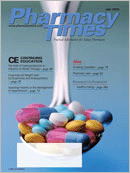Publication
Article
Pharmacy Times
A Pharmacist's Guide to OTC Therapy: Wound Care
Author(s):
Pharmacists can be an excellent source of information for individuals seeking guidance regarding nonprescription wound care products. Currently, several nonprescription formulations of wound care products are available on the market for treating minor wounds. Items include topical antibiotics (Table 1), wound irrigants, wound antiseptics (Table 2), various types of bandages, and products that aid in reducing the appearance of scars (Table 3).
The overall goals of wound care treatment are to promote healing, to prevent infection or further complications, and to minimize the effects of scarring.1 Prior to recommending any wound care products, pharmacists always should determine whether self-treatment is appropriate for the individual. When warranted, pharmacists should recommend that patients seek medical care from a physician (Table 4).
In general, wounds that can be self-treated can include minor scrapes, scratches, cuts, and insect bites. General care of minor wounds typically includes the following 3 steps:
- Cleanse the affected area thoroughly.
- Apply an antibiotic ointment to the wound.
- Cover it with a sterile bandage to create a moist healing environment.
Antibiotic Products
Topical nonprescription antibiotic agents often are used to aid in preventing infections in minor wounds. These agents have been shown to reduce the likelihood of developing an infection by the following mechanisms1:
- Removal of the cause of tissue breakdown (infection and inflammation)
- Prevention of necrotic tissue
- Assistance in closure of the wound
- Promotion of the healing process
First Aid Antiseptic Products
Examples of nonprescription first aid antiseptic products include ethyl alcohol (48%-95%), isopropyl alcohol (50%-91.3%), iodine topical solution USP, iodine tincture USP, povidone-iodine complex (5%-10%), hydrogen peroxide topical solution USP, and camphorated phenol.1 Patients should be reminded that antiseptics should be used to disinfect only skin that is intact.
The Role of the Pharmacist
It is important for pharmacists to remind individuals about the appropriate use of these products. The FDA requires that warning labels be affixed to antibiotic and antiseptic products that state that the duration of use of these products should be no more than 1 week unless directed by a physician. Patients should be advised not to use an antibiotic ointment if they have an allergy to any of the ingredients. In addition, patients should be reminded always to cover wounds with a sterile bandage, because studies have shown that a moist healing environment will accelerate healing and may minimize scarring.2
Furthermore, certain conditions such as diabetes and certain medications may encumber the healing process. Pharmacists should remind patients with these conditions or taking these medications to pay particular attention to minor wound care and to immediately contact their primary health care provider to ensure that the wound is healing properly. Patients also should be informed of when to seek medical care for wounds, especially if the wound does not exhibit any signs of healing after 5 days of self-treatment or if it is showing signs of infection, such as redness, swelling, or no signs of healing.
Ms. Terrie is a clinical pharmacy writer based in Haymarket, Va.
For a list of references, send a stamped, self-addressed envelope to: References Department, Attn. A. Stahl, Pharmacy Times, 241 Forsgate Drive, Jamesburg, NJ 08831; or send an e-mail request to: [email protected].

Newsletter
Stay informed on drug updates, treatment guidelines, and pharmacy practice trends—subscribe to Pharmacy Times for weekly clinical insights.






